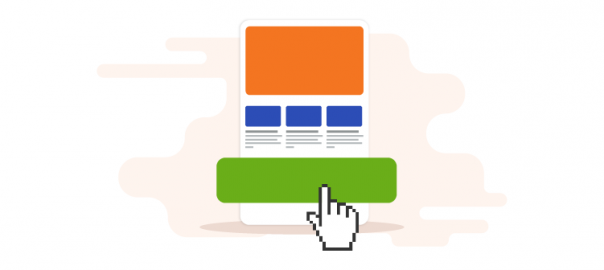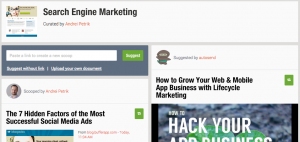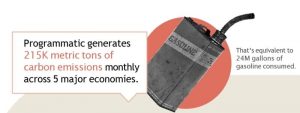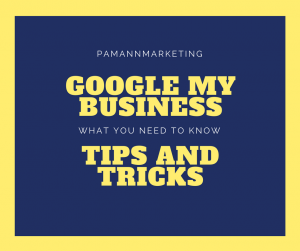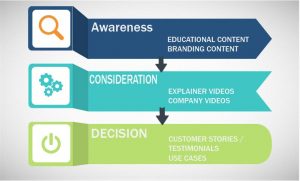Check out these 7 effective tips businesses and content creators can use to boost engagement for holiday emails in 2020.
Right before the holidays, businesses in the know pump up their email marketing to catch their customers’ attention. But how can they create holiday emails that engage prospective and existing customers in the new normal?
The coronavirus pandemic and its subsequent lockdowns have put a dent in many companies’ email marketing strategies.
Well, the answer is simpler than you might think.
Learn why providing a ray of hope in this holiday season with compelling content and a bit of magic can position your brand as one with an eye on the future.
Table of Contents
- Setting a Positive Tone in Your Holiday Email Campaigns
- It’s Time for a New Approach in Communicating with Your Audience
- Native Ads: Extra Stream of Revenue for Your Business
- Adding Holiday Sparkle to Your Subject Lines to Increase Open Rates
- Timing Your Emails to Cover the Season’s Major Holidays
- Optimizing Your Emails for Mobile
- Extending Holiday Invitation with an Effective CTA
Set a Positive Tone in Your Holiday Emails
Consumers have spoken. In a survey of retailers in May 2020, Retail Wire asked respondents, “Do you agree that the American public is ready for advertising messages that move on past reassurance and empathy at this point in the pandemic?” Eighty-one of the survey respondents answered, “Strongly agree,” while 15 percent of them answered, “Somewhat agree.”
That leaves only four percent who preferred darker messaging. Remember, this was only in May. Imagine how these retailers’ customers feel now.
Consumer-facing brands aren’t the only ones that should notice the need for a glimmer of hope. Publications that target B2B companies also advise their subscribers’ marketing teams to take a lighter tone with headlines like the Wall Street Journal’s “In These Uncertain Times, Coronavirus Ads Strike Some Repetitive Notes” and Fast Company’s blunt “We have hit peak pandemic advertising, and now they’re all just annoying.”
To that end, Street Fight Mag’s Joseph Zappa points out that this holiday season presents email marketers with “unique” challenges. To meet these challenges and excel, we need to keep the customer experience at the center of our strategy.
For B2C Brands
Adjust your publishing schedule to that of your customers:
Researching customers’ messaging and buying preferences, therefore, should take the lead in a brand’s holiday emails strategy. Since some regions still have to deal with lockdowns, for instance, many shoppers are buying gifts early instead of waiting for Black Friday. When you adjust your email publishing schedule to their needs with targeted ads, your brand will be the one that gets their business.
Offer a digital option and inform them about it in your emails:
If your company doesn’t already, offer customers an online shopping option. Providing them with the convenience of online shopping is not only for the short term, as Zappa points out. Research shows that in a little over three years, 53 percent of retailers’ revenue will go to businesses that offer them a way to purchase online.
Stress in-store and in-office health and safety protocols:
Since some areas will experience a coronavirus resurgence as winter comes around, customers will want to know that your brand will provide them with the utmost in safety as they browse through your products.
Use email ads in the body of your emails:
Native programmatic advertising within the body of your emails can offer your readers a seamless way to find other products or content they’re likely to buy or to read. As the holidays draw closer and they get busier, a one-stop-shop that helps direct them to gift options will offer convenience, as well as build loyalty to your brand. Even better, these ads can create an additional stream of revenue for your company, a real bonus after a year of shutdowns.

For B2B Brands
Offer time-sensitive combination packages:
Nearing the end of the year, your prospects will be evaluating their merchandise, supplies, and service providers. Consider sending holiday-themed emails with combination deals that will help your customers conquer their challenges during the coming year. A generous discount, especially during their first year, might drive faster buying decisions.
Respond rapidly to changes in customer data:
Companies need to be agile enough to change their direction in messaging to accommodate their customers’ changing needs. Emails are a highly effective way to get those messages out quickly to their customers’ chief decision-makers.
Use native programmatic ads to give recipients a seamless experience:
When your emails connect your prospects to products, services, and information they need, they appreciate your company’s focus on meeting their needs.
Reimagine Your Holiday Email Marketing Strategy to Focus on Your Audience
It’s tempting to focus on your merchandise and services when you look at the holiday numbers. After all, as Forbes’ Scott Darrohn points out, 50 percent of a consumer’s “holiday shopping spree” consists of online sales.
Your customers need something to bring them joy after a year of lockdowns and lost income. When you position your products, services, and content as something that will create holiday happiness, your newsletter will be the one they turn to. Thoughtful, well-researched information that targets your customers’ needs during the holiday seasons will draw readers into your emails.
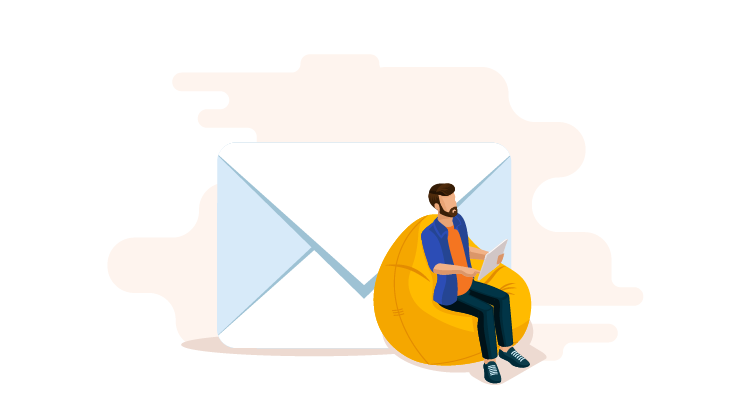
With email campaigns done right, it costs 62 percent less than traditional marketing yet yields three times more leads, as Wordstream’s Dan Shewan points out. Not to mention that email is the channel where your audience is naturally engaged. And, when it meets your audience’s needs for a lighthearted approach, it also can build loyalty.
Research your customers through customer personas
Take a deep dive into your website and social analytics to see which customers have bought your products or have shown a great interest in your content. Look at their demographics, their social media likes, their product preferences, and their pain points—those critical issues that keep them up all night. Next, create customer personas to put a human face on each of your ideal customers.
To create a customer persona, you separate all your customers and prospects into groups based on that data—and their pain points. Most companies give them a nickname to remind them about their characteristics and the problems that drive them.

For example, if your business is a high-end online toy store, these might be your ideal customers:
“Harried Grandma Harriet,” a busy CEO, has plenty of money but not enough time. She also has a handful of grandkids that consume her brief time away from the job—you know that from social media data gleaned from your customers and prospects. She also loves decorating, but she hires an interior designer to do the nuts and bolts of her design ideas.
“Nurse Nancy” is a young married mother of a toddler and a school-age child, one with ADHD. She hasn’t a lot of money, but she is choosy about what toys she buys her children. A nurse who’s taking night classes to become a nurse practitioner, she knows the value of education—and wants her kids to have toys that will teach as well as entertain. She especially wants toys that will leverage her kids’ preference for hands-on learning to teach them other skills.
“Salesman Dad Dan” is a divorced dad with plenty of money and time. Though he loves his kids, he divides most of his time between looking for a replacement for his ex and driving to appointments. He feels guilty about not seeing his kids, so he indulges them with tons of expensive toys on birthdays and holidays.
Tailor your holiday emails messaging to your customer personas with segmentation
The great thing about customer personas is that you can use them to segment your emails. For example, your customer persona “Harried Grandma Harriet” might be a busy CEO, but she has a handful of grandkids that consume her brief time away from the job.
If you’re an online toy store, “Harriet” and others in her segment will probably love a gift-wrapping service, expedited shipping to her door—and she’ll probably be OK with paying extra for those services—even though she’d love to wrap the gifts herself. After all, she doesn’t want to be grumpy from wrapping gifts all night the day before the big holiday.
For all your “Harriets,” a newsletter article that teaches customers effective, yet time-saving holiday tips would definitely be welcome in their inboxes.
An article that shares tips on gift shopping for kids (along with some carefully curated selections with buy-now links to purchase them), as well as tips for wrapping those gifts quickly yet attractively, will be one they’ll archive in their inboxes.

Even though they might not have time to wrap the gifts this year, they want to have those tips on hand for next year.
Bonus points if you point out that your company offers free gift wrapping for orders over $ 200, along with expediting shipping for orders over $ 300.
Not only will you have solved her current problems, but you’ve given her some tips that will make next year’s holiday season easier to plan.
Solve your target customers’ problems, one persona at a time
Similarly, you, too, can create content that meets your customers’ needs.
For instance, for your “Nurse Nancy” types, you can do some research into what makes the best educational toys for each age group. Cite some noted psychologists and education professionals for added authority. Busy Nancy might, too, like a little help with shopping, wrapping, and shipping.
As for “Salesman Dad Dan,” a newsletter article on dealing with guilt over the holidays might bring some welcome relief—and advice.
When you mention some ways that dads can use play to bond with their children, as well as what toys encourage parent-child play, he’ll be likely to become a faithful subscriber to your newsletter.
Then, get your brand’s holiday message into the right hands early on
As we mentioned earlier, customers are making holiday buying decisions earlier than ever. Getting the message out about your company’s offerings now – as opposed to waiting until closer to the traditional Black Friday – is essential to capture their attention.
With email, your brand can get ahead of the holiday curve with messages that trigger customer actions. Email gets to your customers’ inboxes instantaneously, but it allows customers to keep the information in an easily retrievable form, so they can compare your company’s offers with others.
If your marketing teams are strapped for time this season, consider using a list of other top brands’ successful emails as an inspiration for your own.
Use Native Ads: Add an Extra Stream of Revenue to Your Business
Native ads appear like sponsored stories do in your social news feed and other articles. They look like links to other articles. These ads link to products, services, and relevant information that your target customers will likely need or want.
Native ads aren’t limited to products and services. They’re also highly effective for content creators or publishers who seek to inform people with news about topics they are interested in.
Programmatic native ads provide your recipients with a great alternative to find what they’re looking for – for the holidays and beyond. At this busy time of the year, that service is something they’ll appreciate.
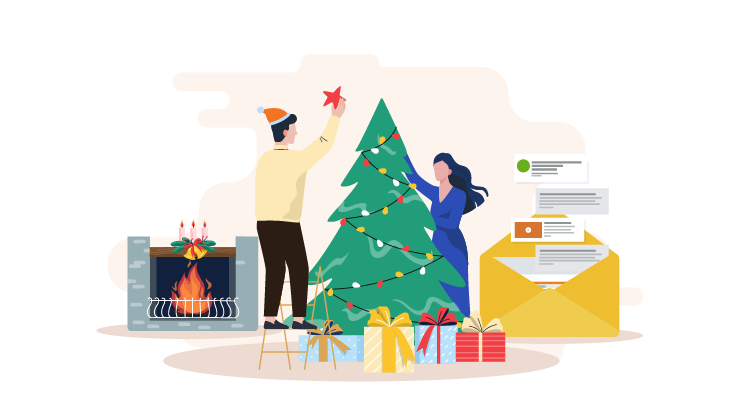
When you use a robust programmatic email monetization platform, you put the power of advanced personalization algorithms to work for your brand.
AI-driven monetization software uses your target customers’ data to select ads that will make your brand seem like Santa Claus to your customers come holiday time.
Additionally, you can create an additional stream of revenue from the ads themselves. When your recipients click on an ad, money flows into your bank account.
Add Holiday Sparkle to Your Subject Lines to Increase Your Open Rate
All your great email content will go unread, though, unless your target customers open your emails. As a recent Campaign Monitor article shows, a little holiday bling can make your email subject lines shine this season. That goes double in 2020, with the pandemic making good cheer a rare thing to find.
Use holiday-themed subject lines and copy for seasonal appeal
During the holiday season, customers appreciate a festive edge to your email subject lines, say the email marketing experts at Send in Blue.
To that end, they’ve compiled a list of 50 subject line examples that can serve as an inspiration as you write your own. Of course, you’ll need to tweak them to appeal to your brand’s target customers.

Address your recipients’ pain points
Make sure that your subject lines address your recipients’ pain points. Take the time to edit them for each customer segment’s needs.
Leverage FOMO for better open rates
No one wants to miss out on a discount, some last-minute holiday advice, or other timely information. Using wording like “Don’t Miss Out on The One Way to Stay Sane This Holiday Season,” chances are, your target customers will open yours first. Words like “Now” or “Don’t Miss Out” trigger the FOMO impulse, says Moveable Ink marketing expert Kristen Dunleavy. She points out that such words can increase your open rate by as much as 22 percent.
Keep subject lines short for higher mobile engagement
And, as the Send in Blue article also points out, keep subject lines short. Most of your recipients are likely to read your emails on their mobile devices. Subject lines around 30-50 characters fare better on mobile.
Personalize subject lines
People love to see their names in print. When personalizing subject lines—especially during the busy holiday season—people are more likely to open your emails—26% more likely, says the Campaign Monitor staff.
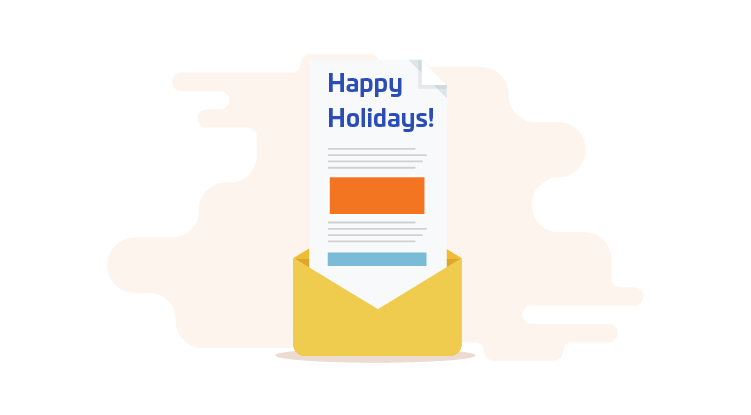
Use preview text to complement your subject lines
Use preview text to entice recipients to open your emails. Elaborate on your subject line, but don’t use it to convey key details because some email clients do not display preview text.
Time Your Emails to Cover the Season’s Major Holidays
Make sure you send out newsletters and other important emails well before the major holiday events this season. Keep these 2020 fall and winter holidays in mind:
- Halloween: October 31
- Black Friday: November 27
- Hanukkah: December 10-18
- Catholic and Protestant Christmas: December 25
- Kwanzaa: December 26, 2020 – January 1, 2021
- New Year’s Eve: December 31
- New Year’s Day: January 1, 2021
- Eastern Orthodox Christmas: January 7, 2020

Optimize Your Emails for Mobile
Mobile devices are increasingly the go-to device your prospects use to browse through their emails. Whether they are on the bus, grabbing lunch, waiting in line, or taking the subway home, They’ll likely check their emails as they wait.
That’s likely where they’ll do their holiday shopping, too, Campaign Monitor points out. Over the last four years, customers’ mobile purchases rocketed from 3.4 percent to 36.7 percent. When it comes to holiday shopping, though, 2019 numbers showed that customers opened 63 percent of Cyber Monday emails and 76 percent of Black Friday emails on their mobile devices.
Optimizing for mobile for the holidays isn’t optional anymore. It’s essential for every content writing team.
Extend a Holiday Invitation with an Effective Call to Action
Finally, don’t forget to provide your readers with an effective call to action (CTA). Whether you want to link it to a purchase page, an e-book offer, or another piece of content, make sure that you ask them to engage with your brand.

Digital & Social Articles on Business 2 Community
(11)
